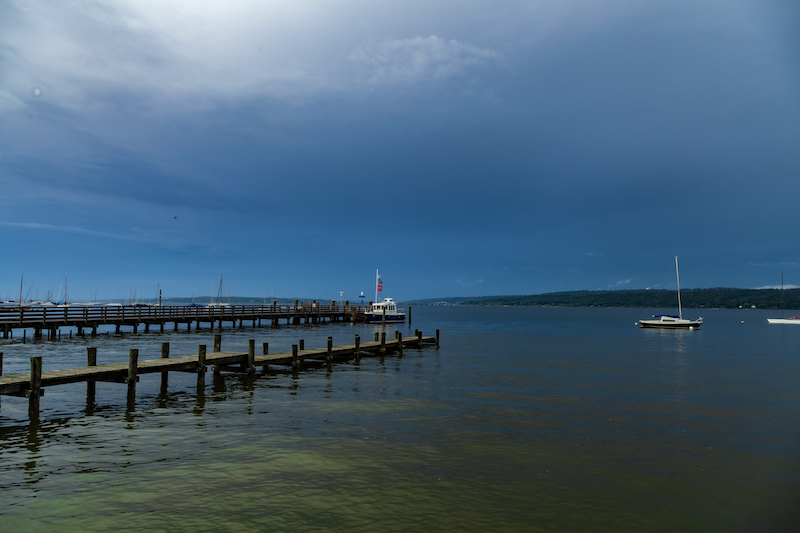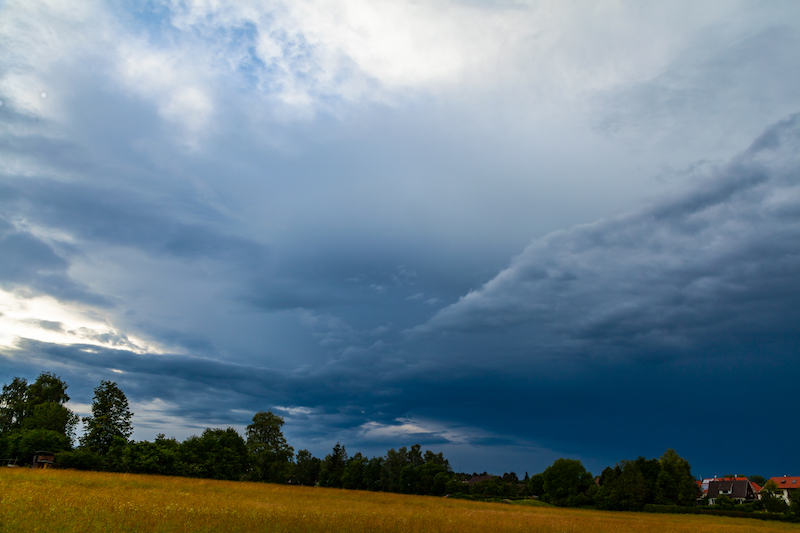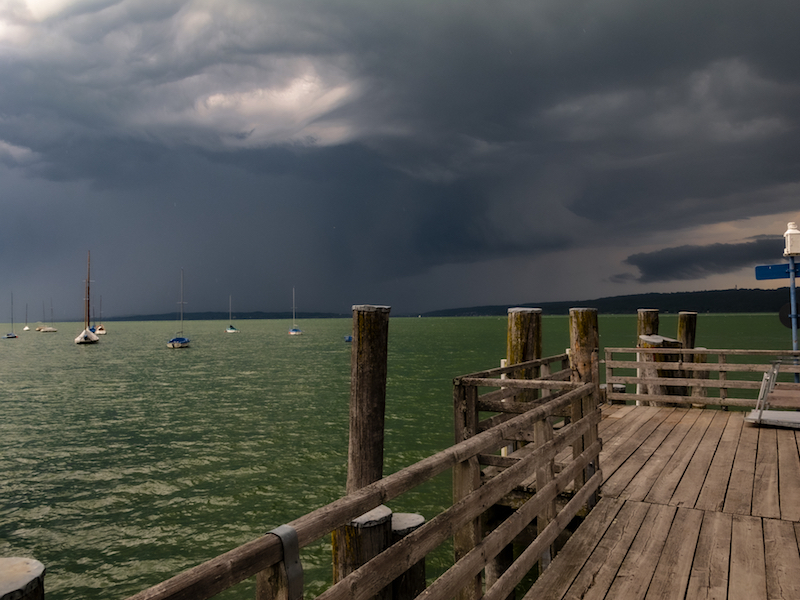June 2019: Dramatic Hailstorm put sailors in danger and a monster Heatwave.
May 2019 was the first month in Middle Europe for a long time which wasn’t too hot. There were some rainy days. It seemed that weather might turn in a more “normal” mode compared to 2018. This was before June. In the larger Munich area people experienced a freak hail storm on Whit Monday. There was also severe weather in other parts of Germany in the first half of June. Later the month, large parts of Europe suffered from one of the most extreme heatwaves ever recorded.

Thunderstorms and severe weather didn’t came unexpected on pentecost. Weather models showed a highly likelyhood for thunderstorms in the Alps and the Upper Bavaria region. However the events on June 10 proved again how tricky severe weather developments can be and how difficult it is to set precicely the right weather alert in motion.
Sunday, June 9, was more or less a qiet day. It was getting warmer in Upper Bavaria and other regions. There were already weather warnings issued. On Monday, June 10, the alert system of the huge lake Ammersee south-west of Munich was activated in the morning hours, but then it was quiet for most of the day. A lot of tourists enjoyed the holiday in Germany. People were swimming and sailing. Weather forecasters and and the lifeguard service were still expecting something to happen.
The weather radar showed signals getting stronger in the Allgäu and the Upland before the Alps around Kempten after noon. Here an incredibly strong cell was building up. When I checked the radar a couple of times in the early afternoon however, I couldn’t figure out which path that storm would take. I also didn’t figured out how fast this monsterstorm would move eastwards, so I was also surprised when it suddenly became really dark on this summer afternoon.
It was around 16.23pm when the orange alarm lights at the Bavarian lakes were activated again. There were still a lot of sailors out there. At one lake the lifeguard service warned people who were still swimming in the “Wörthsee” and closed the shore. 50 minutes later all hell brake loose on lake Ammersee. The Starnberger Merkur Newspaper later published a very interesting coverage.
Alex Beck, a sailor, told later the Merkur-reporters that the storm-cell was “racing”. Very soon the lifeguard service had to solve hands full over the next hours.
The same applied to firestarters and police: The thunderstorm left a path of destruction beginning in the Allgäu, hit several communities around the North side of the lake Ammersee region and also hit the west and the north of the Munich area.
Hailstorms in Upper Bavaria are not unusual. There is particularly a history for severe weather in May and around Pentecoste. What’s so unusual was the path, which was hard to predict. Big hail is often more seen in the South-East were there is even a special cloudseeding flyer unit for this problem. I didn’t find any report from a professional weather researcher, but I am sure this was a strong super-cell. Super-cells are more likely to take unusual paths.
The intensity was the other unusual fact. I experienced also strong wind gusts and smaller hail but 10 km to the north it was raining hailstones with the size of tennis balls.
Within minutes roofs very destroyed, nameless cars damaged, a motorway tunnel was set under water, greenhouses were completely destroyed and also a grocery store. It ended up in estimated damage cost of 30 Mio. Euros.
The same time people on the lake Ammersee were struggling for their lives. A couple hung on their capsized sailing boat, others were stranded and another sailor couple were only safed by their “persenning”, a cover, from the hail bombardement. They had reached a buoy but couldn’t leave their ship. Then they had to wait out the storm. At this time they experienced waves like never before according the their account in the “Starnberger Merkur” newspaper.

The following weeks people began to recover from the hailstorm, settling insurance matters and repairing windows, cars and houses. There were more thunderstorms but nothing like the cell on June 10. However another extreme weather situation was already throwing a shadow.
Weather models predicted an enormorous heatwave for the second half of June. Weather services were astonished by themselves about the numbers. And the models were mostly right. Germany saw new temperature records but not the 40 degrees Celsius. Nevertheless, there were set many new records. It didn’t took long and the bushfires, which were a problem in May started, again.
France saw the worst with some over 40 degree Celsius records. The authorities had to issue a state of emergency in some areas. Particularly Southern France was affected.
The situation calmed by the end of month. On July 1, 2019, a cold front with thunderstorms reached Southern Germany. There are still wildfires raging. The heatwave is only part of a problem which has the potential to become the real big threat for the near future: In wide parts of Germany there is still a drought. The government published recently a study about the effects of a drought lasting several years.

